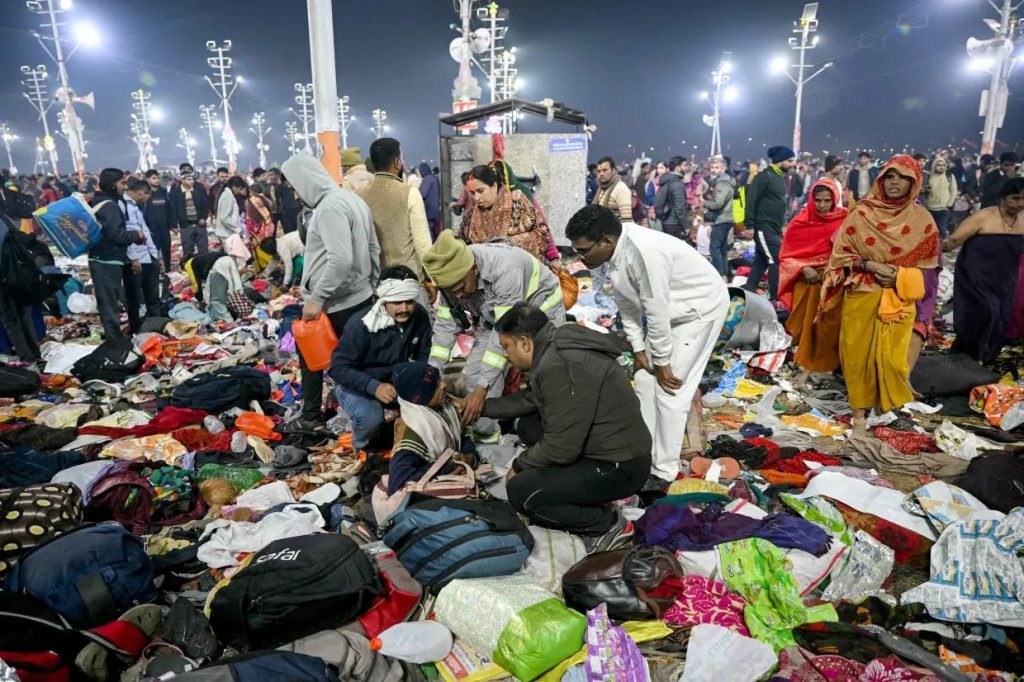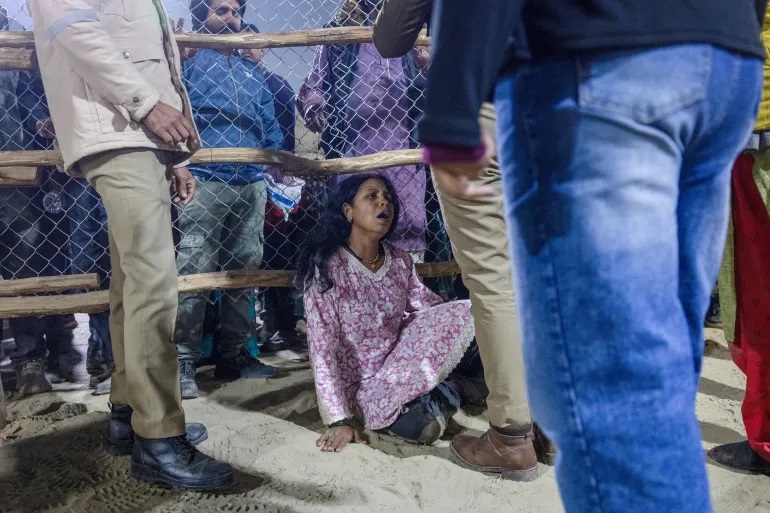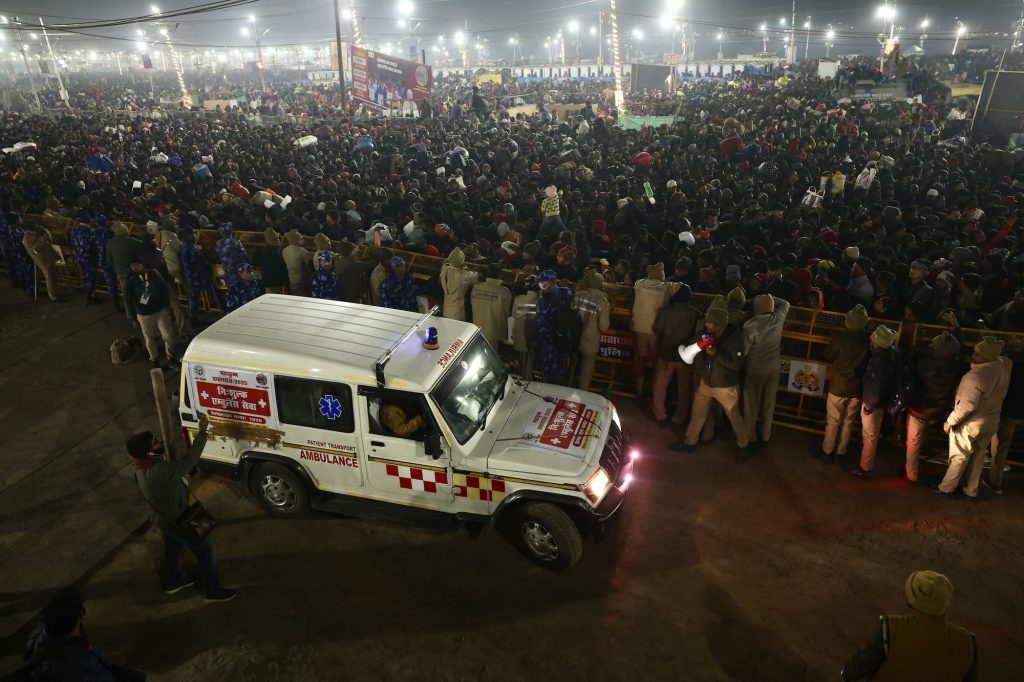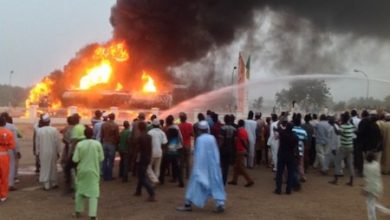At least 30 killed in stampede at India’s Kumbh Mela festival

At least 30 people have lost their lives in a stampede at the Kumbh Mela, the world’s largest religious gathering, in northern India, officials confirmed.
The tragedy unfolded early Wednesday in the city of Prayagraj, where pilgrims gathered on the riverbanks for a sacred ritual bath.
The rush led to a deadly crush, leaving 60 others injured, police reported. Initial casualty figures took hours to be officially released, leading opposition leaders to criticize the government for a lack of transparency.
Prime Minister Narendra Modi extended his condolences, stating, “I wish for the speedy recovery of all injured,” in a post on X, calling the event “extremely sad.” Many festival-goers continue searching for missing loved ones.
Senior police officer Vaibhav Krishna confirmed that 90 injured people were transported to hospitals. “Unfortunately, 30 of those devotees have died,” he announced at a news conference, adding that 25 victims had been identified.
Eyewitness accounts described scenes of chaos, with belongings such as clothes, shoes, and blankets scattered across the ground as people desperately tried to escape.
“People were going in every direction,” said Ayesha Mishra, who was present at the site. “They were getting pushed around and falling down. Children were being crushed.”
Images from the scene depicted bruised bodies covered in mud, with some victims being carried away on stretchers while ambulances navigated the packed venue.
For hours, uncertainty clouded the extent of the tragedy, with journalists barred from entering the main hospital. Uttar Pradesh Chief Minister Yogi Adityanath acknowledged severe injuries but did not initially mention fatalities.
Despite the tragedy, the religious fervor continued, with more than 50 million devotees reportedly bathing by 14:00 local time (08:30 GMT), according to government figures.
The Kumbh Mela, held every 12 years at the confluence of the Ganges, Yamuna, and the mythical Saraswati rivers, is believed to cleanse sins and offer salvation. Beyond the spiritual significance, the festival is a grand spectacle featuring ascetics, politicians, and celebrities.
The event, which began on January 13 and will continue until February 26, attracts millions of devotees, including families, children, and the elderly.
Wednesday marked the festival’s most significant bathing day, with up to 100 million people expected to participate. The Shahi Snan, or royal bath, saw thousands of ash-smeared ascetics plunging into the river.
By Tuesday evening, anticipation was high, with colorful processions and jubilant chanting. However, the atmosphere turned tragic overnight.

Reports of the crush emerged between 01:00 and 02:00 local time (19:30–20:30 GMT), when ambulances began arriving at the venue.
Eyewitnesses described a sudden surge of people pushing toward the Sangam Nose, the sacred confluence point, trampling those who had been sleeping nearby. “The crowds were so huge that people were trampling upon each other. My family and I fell,” said devotee Poonam Singh.
She lost contact with seven relatives, all now missing. “I lost all my money, my belongings, and I can’t find my family anywhere.”
A lack of clear communication from officials exacerbated the panic. Many sensed danger but proceeded with their rituals, unaware of the severity.
Official announcements advising people to avoid the Sangam Nose were made only around 04:00, by which time the pathways were already gridlocked.
Despite the calamity, tens of thousands continued with their pilgrimage. Initially, ascetics considered canceling their participation but later proceeded with scaled-down processions.

Throughout the day, desperate families scoured the festival grounds for missing loved ones, with lost belongings lying scattered in the mud.
“He needs his medicines, but they are with me,” said Anita Devi from Jhansi, searching for her husband. “When the crush happened, I lost hold of his hand, and he was gone in a blink.”
Fatal stampedes are not uncommon in India, where religious events and festivals often see massive, uncontrolled crowds.
In 2023, over 120 people died in a similar incident during a religious gathering in Hathras, also in Uttar Pradesh.
Authorities assured the public that the situation at Kumbh Mela is now under control. However, opposition leader Rahul Gandhi criticized the government, blaming “mismanagement and a focus on VIP movements instead of common devotees” for the tragedy.
Several festival-goers also held officials accountable. “Why was there no police presence where the crush happened?” asked Ayesha Mishra. “They were stationed at the end of the venue while we got crushed in the middle.”
She added, “We do not want to take a holy dip like this. At this point, the government should just tell people to stay home.”
Source-BBC





